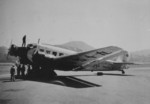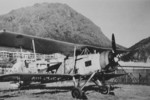
Hong Kong
| Full Name | 55 Crown Colony of Hong Kong | |
| Alliance | Allies - Minor Member Nation or Possession | |
| Possessing Power | United Kingdom | |
| Entry into WW2 | 8 Dec 1941 | |
| Population in 1939 | 1,500,000 | |
| Military Deaths in WW2 | 2,113 |
Contributor: C. Peter Chen
ww2dbaseIn 1842, at the end of the First Opium War, the Treaty of Nanking/Nanjing demanded the Qing Dynasty to cede the island in the Hong Kong inlet in southern China to the United Kingdom in perpetuity. The British established the Crown Colony of Hong Kong to administer this new colony, and the inlet was renamed Aberdeen Harbor. In Mar 1860, the British leased Kowloon Peninsula to the north of the island. In Oct of the same year, at the end of the short Second Opium War, the Treaty of Peking/Beijing forced Qing Dynasty to cede to the United Kingdom Kowloon, Hong Kong island, and Stonecutters island in perpetuity. In 1898, the Second Convention of Peking/Beijing, also known as the "Convention between the United Kingdom and China, Respecting an Extension of Hong Kong Territory", the territory later known as the "New Territories" was leased to the United Kingdom for 99 years. In the years immediately preceding the Pacific War, Hong Kong had a population of over 1,500,000. The Japanese invasion of Hong Kong began in the very first days of the Pacific War, and the campaign lasted little under three weeks. In the afternoon of 25 Dec 1941, Governor of Hong Kong, Sir Mark Aitchison Young officially surrendered the colony to Japan; the battle saw the deaths of over 2,000 British and colonial troops, while about 4,000 civilians were killed during the fighting. With the Japanese in power, most of the healthcare facilities were converted to military hospitals, thus depriving the ordinary citizens adequate medical care. Food was severely rationed; in order to keep the need of food on a very low level, large numbers of ethnically Chinese residence of Hong Kong were deported to China, resulting to the population decreasing to merely 600,000 by the war's end. Mass media and education systems were taken over by the Japanese, and both of which were used in an effort to Japanize the population. Two of the largest armed resistance groups were the East River Force and the Hong Kong-Kowloon Brigade, which would merge into the larger Guangdong People's Anti-Japanese Guerrilla Force in Dec 1943. On 30 Aug 1945, after the Japanese surrender, a British battle squadron led by the aircraft carrier Indomitable entered Hong Kong to reoccupy the territory, and the Japanese officially surrendered on 16 Sep. Although US President Franklin Roosevelt had previously made promises that Hong Kong would be returned to the Republic of China, Britain would ultimately restore Hong Kong as a Crown Colony. When the 99-year lease came to an end in 1997, with Qing Dynasty long overthrown, the United Kingdom chose to return Hong Kong, in its entirely rather than just the New Territories, to communist China. Today, Hong Kong is ruled by communist China as a special administrative region.
ww2dbaseSource: Wikipedia
Last Major Update: Dec 2012
| Events Taken Place in Hong Kong | ||
| Battle of Hong Kong | 8 Dec 1941 - 25 Dec 1941 | |
| Facilities | ||
| Stanley Prison and St Stephen's College | Prison Camp | |
Photographs
 |  |  |  |